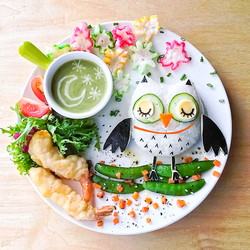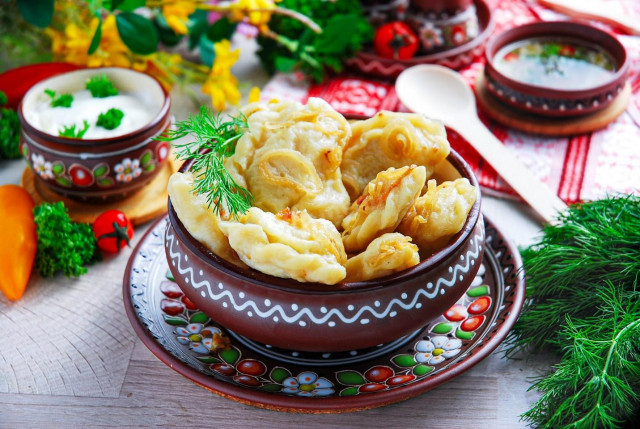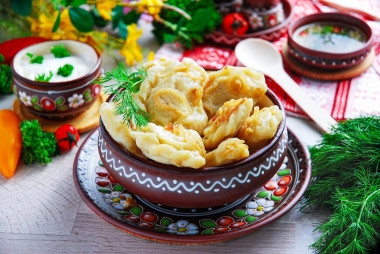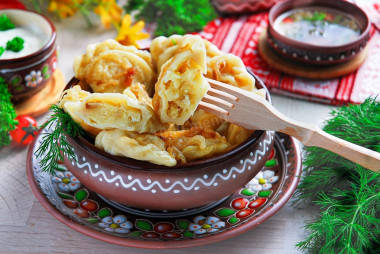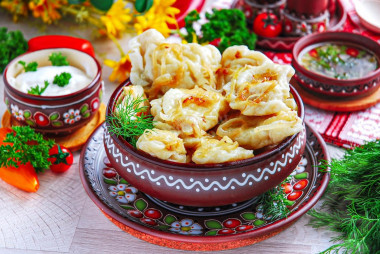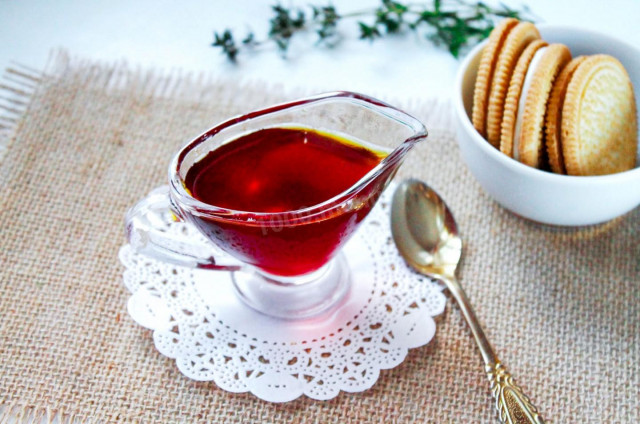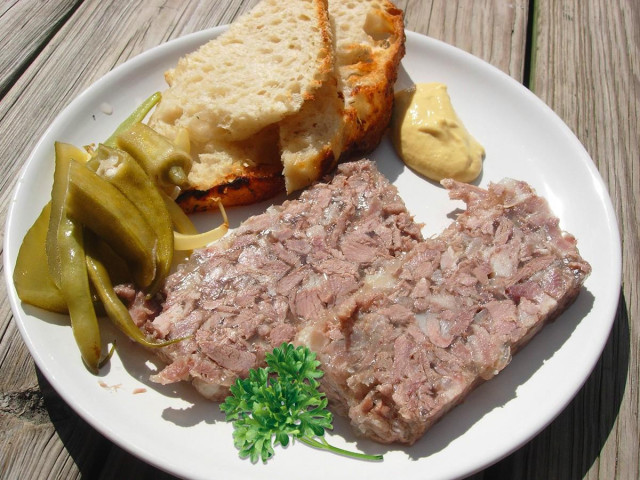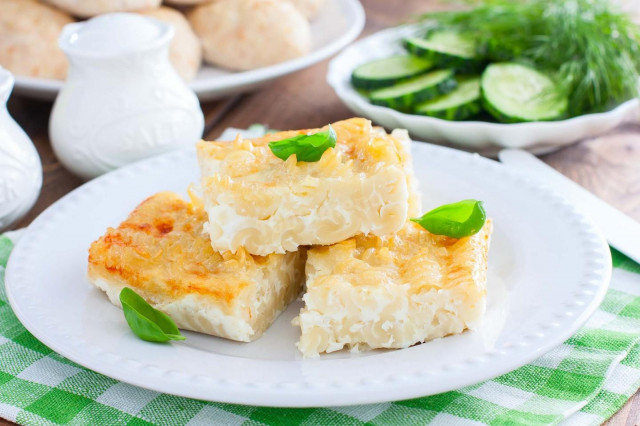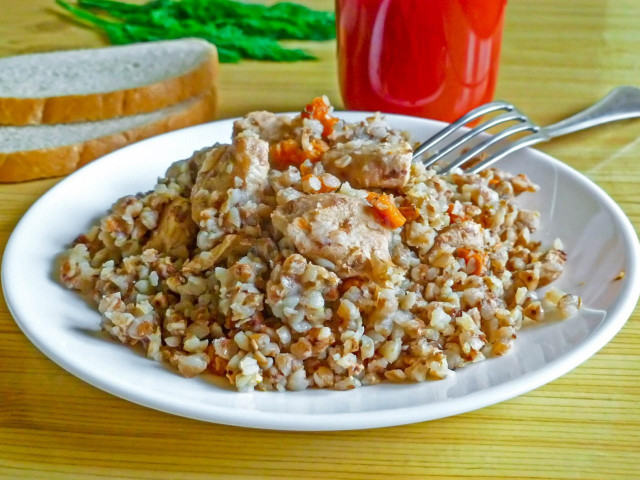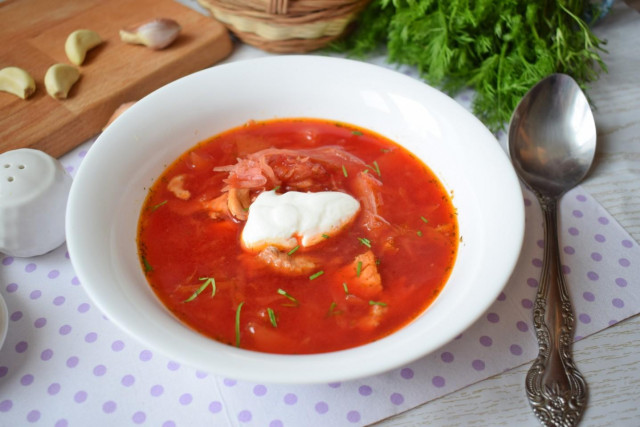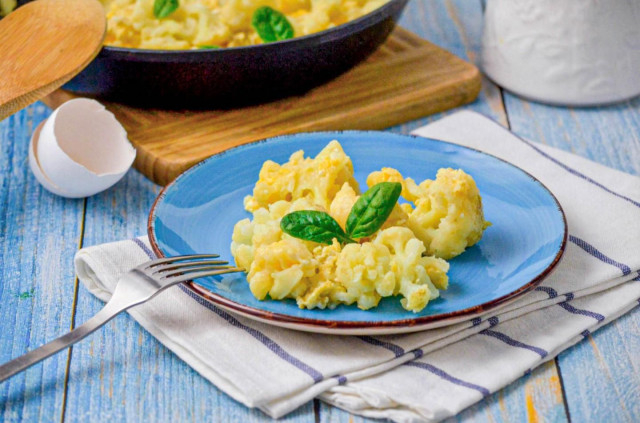Composition / ingredients
Step-by-step cooking
Step 1:
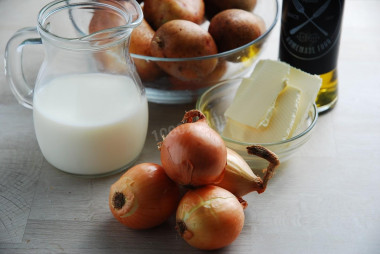
How to make dumplings with potatoes and fried onions? Start by making the filling. Prepare the necessary ingredients. Wash the potatoes thoroughly. Onions will need 3-4 pcs .
Step 2:
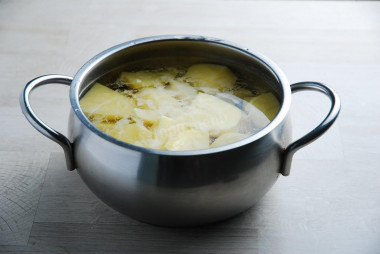
Peel the potatoes, wash them, cut them into three or four parts, put them in a saucepan. Fill with water and put on the fire to cook. When the potatoes boil, reduce the heat, add salt. You can also add bay leaf, 3-4 allspice peas, but this is not necessary.
Step 3:
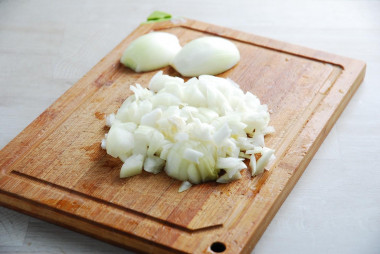
While the potatoes are cooking, do the frying. Peel the onion from the husk, rinse with cold water. Cut into medium-sized cubes.
Step 4:
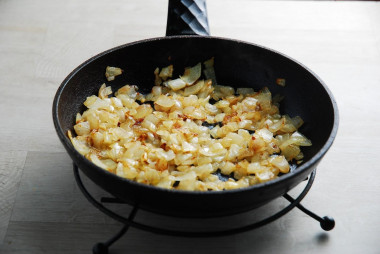
Pour refined vegetable oil into the pan, heat it up. Fry the onion over medium heat until golden brown. Stir from time to time, otherwise it will burn.
Step 5:
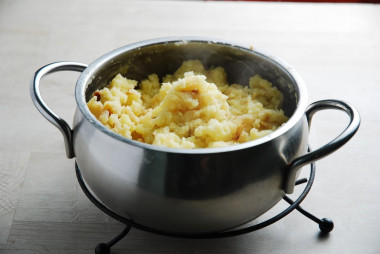
When the potatoes are cooked, it will be easy to pierce with a fork or knife, drain the water. Add butter, warm milk and toasted onions. Using a potato masher, chop the potatoes into a homogeneous puree. The filling is ready. Leave it to cool, and at this time knead the dough into dumplings.
Step 6:
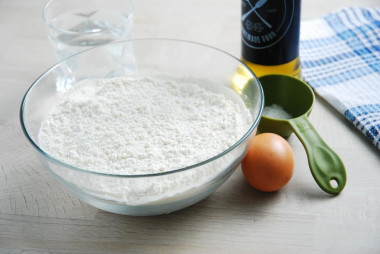
How to make dough for dumplings? Prepare the ingredients according to the list. Take wheat flour of the highest grade. Be sure to sift it to saturate it with oxygen. Remove the chicken egg from the refrigerator in advance so that it heats up to room temperature.
Step 7:
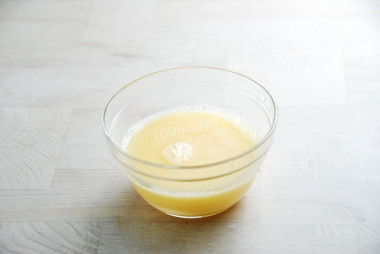
Pour the flour into a wide and deep bowl, where it will be convenient to knead the dough. Separately, beat an egg into a container, pour boiled water at room temperature and a tablespoon of refined vegetable oil. I used olive oil, but you can take sunflower oil. Whisk the liquid with a whisk or fork until smooth and pour into the flour.
Step 8:
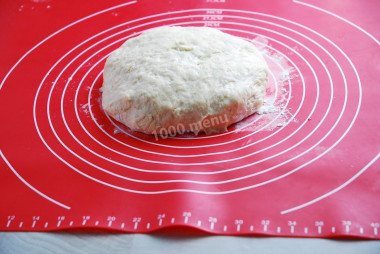
Knead the dough. Since flour is different for everyone, its amount may need more or less than indicated in the recipe, see the consistency of the dough. It should be pretty cool, not sticky to the hands. Cover the dough with a towel and leave for 40 minutes.
Step 9:
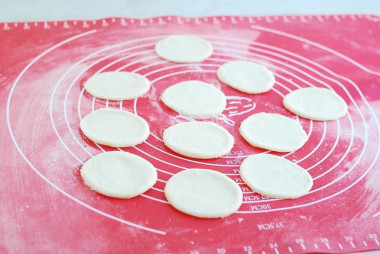
Roll out part of the dough into a circle about 3 mm thick. The thinner the dough, the tastier the dumplings will be. Squeeze out the circles with a special mold. Put about 1 chine in the middle of each circle. l fillings and seal the dumplings. If you want, you can wrap a pigtail like this. Important! Make sure that the filling or fat does not get on the edges of the dough blank, otherwise the dumplings will boil.
Step 10:
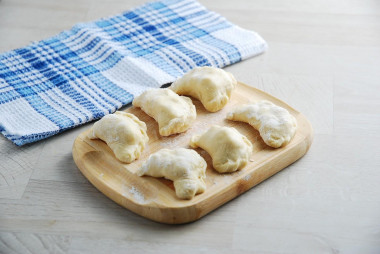
You need to cook in a large saucepan, dumplings should float freely so as not to stick together. Pour water (about 3 liters) and put it on the fire. When the water boils, add salt (0.5 tablespoons). With a spoon, create a funnel in the water, turn it in a counterclockwise direction. Put the dumplings (15 pieces) in a saucepan. When they boil, reduce the heat to low and cook for about 4-6 minutes. The thicker the dough for dumplings, the longer they will cook.
Step 11:

While the dumplings are cooking, prepare the ingredients for serving the dumplings. Take 3 pieces of medium-sized onions, refined vegetable oil and high-quality butter.
Step 12:
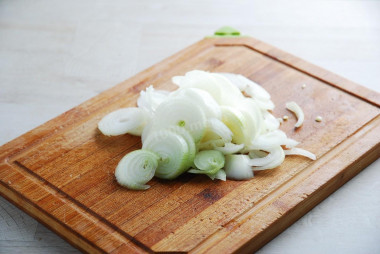
Peel the onion, rinse with cold water and cut into thin rings. If you have a large onion, then cut it into half rings. Pour vegetable oil into a frying pan, heat up, put the onion and fry until golden brown.
Step 13:
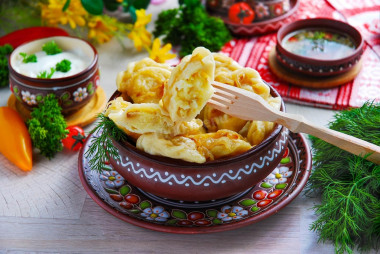
Remove the finished dumplings with a slotted spoon into a colander to drain excess liquid. Then transfer to a bowl, add butter, fried onions to the dumplings and shake well with the lid closed so that the dumplings mix well with butter and frying.
Dumplings can be prepared for the future and frozen. To do this, transfer the blanks to a floured cutting board, send them to the freezer. After a few hours, put them in a bag. You can store dumplings in the freezer for no more than 4 months.
Any oils are useful only until a certain temperature is reached - the point of smoking, at which the oil begins to burn and toxic substances, including carcinogens, are formed in it. How to determine the roasting temperature and choose the best oil for frying, and which is better not to use at all, read here .
For cooking, it is better to use filtered or bottled water that is neutral to taste. If you use tap water, keep in mind that it can give the dish an unpleasant characteristic taste.
Caloric content of the products possible in the composition of the dish
- Ripe potatoes - 80 kcal/100g
- Baked potatoes - 70 kcal/100g
- Mashed potatoes - 380 kcal/100g
- Boiled potatoes - 82 kcal/100g
- Potatoes in uniform - 74 kcal/100g
- Fried potatoes - 192 kcal/100g
- Whole cow's milk - 68 kcal/100g
- Milk 3.5% fat content - 64 kcal/100g
- Milk 3.2% fat content - 60 kcal/100g
- Milk 1.5% fat content - 47 kcal/100g
- Concentrated milk 7.5% fat content - 140 kcal/100g
- Milk 2.5% fat content - 54 kcal/100g
- Whole durum wheat flour fortified - 333 kcal/100g
- Whole durum wheat flour, universal - 364 kcal/100g
- Flour krupchatka - 348 kcal/100g
- Flour - 325 kcal/100g
- Butter 82% - 734 kcal/100g
- Amateur unsalted butter - 709 kcal/100g
- Unsalted peasant butter - 661 kcal/100g
- Peasant salted butter - 652 kcal/100g
- Melted butter - 869 kcal/100g
- Vegetable oil - 873 kcal/100g
- Salt - 0 kcal/100g
- Water - 0 kcal/100g
- Onion - 41 kcal/100g
- Chicken egg - 80 kcal/100g
